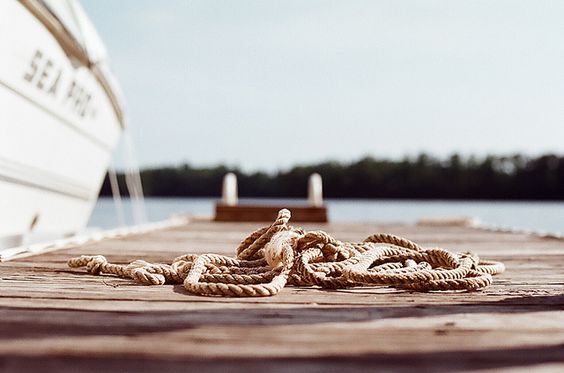
Anchors away – but, wait, what’s your anchor attached to? Rope is an important but often overlooked part of maritime activity, serving many functions.
Most widely used for docking, anchoring, towing, and rigging, rope is an important member of any boat crew! That’s why it’s important to pick rope for anchors and general marine use that will do its duty.
In the end, most boaters will generally use either Nylon rope or Polypropylene rope, depending on the size of their boat, weather conditions, and the activity they need it for of course.
To learn about the best rope for boating and marine use, read on!
What Rope Should You Use For An Anchor?
Unless you want to float away, having a good anchor in place is vital. The ground tackle system consists of the actual anchor and then the anchor rode, which can be a rope/chain combination or, all chain. Which kind of system you’ll uses largely depends on the size and type of boat you have.
However, if you decide that a rope/chain combo is the way to go, you should use Nylon rope. The elastic quality of nylon gives this rope great shock absorption. This is necessary given the force of the wind and waves. In addition, Nylon rope is very strong, flexible, rot/mildew resistant, and generally inexpensive. This rope is also easy to handle (compared to other types of rope) and holds up very well in the sunlight.
For nylon anchor lines, three strand rope is the preferred type, as it has stretch and resistance to abrasion, but braided will work as well. If you go with a braided line, be sure to pick a type that is less likely to snag. Remember, although your Nylon based anchor line will have no problem under tough conditions like wind, its breaking strength will decrease with age from knots, kinks, etc.
What’s the Best Rope For a Dock Line?
Just like with anchor lines, Nylon rope is generally your best choice for dock lines. When selecting rope for a dock line, it’s important to have two sets in mind: temporary slips and permanent slips, as they’ll both have different needs.
Nylon rope is the best for docking and mooring because of its strength and stretch. Double braid or three-strand line should do the trick. Easy to splice and reasonably priced, nylon rope is the way to go.
If you have permanent dock lines, you’ll want to protect the rope from chafe since it will be constantly in use. This can be done with chafe guards, eye splices or galvanized shackles. Transient, or temporary dock lines, are lines stored on board designated specifically for travel.
What Rope Do I Need For General Marine Use Like Pulling/Towing?
Polypropylene rope (sometimes referred to as the “Yellow Rope”) is most commonly used for activities like wake-boarding and water skiing. It’s also used to tow dinghies and tenders, although Nylon Rope can work too.
Polypropylene rope floats and is almost as strong as Nylon, making it perfectly acceptable for these types of activities. Keep in mind though, this rope is far less resistant to the sun’s UV rays and will not last as long as Nylon rope.
There’s a reason that sailors know so many different types of knots. It is because there are many ways to incorporate rope into their work. As you can see, rope serves many important functions onboard your vessel, so don’t skimp! Always select the best rope for boating and marine use that you can. Ootherwise it can rot, degrade, and break.
*Not part of an article on marine rope, but many of the reasons yellow Polypropylene rope works well for skiing makes it great for other tasks. I use it myself for lashing projects, and the 1/2 thick 600 foot roll pictured at the top is very useful for homestead building projects.
